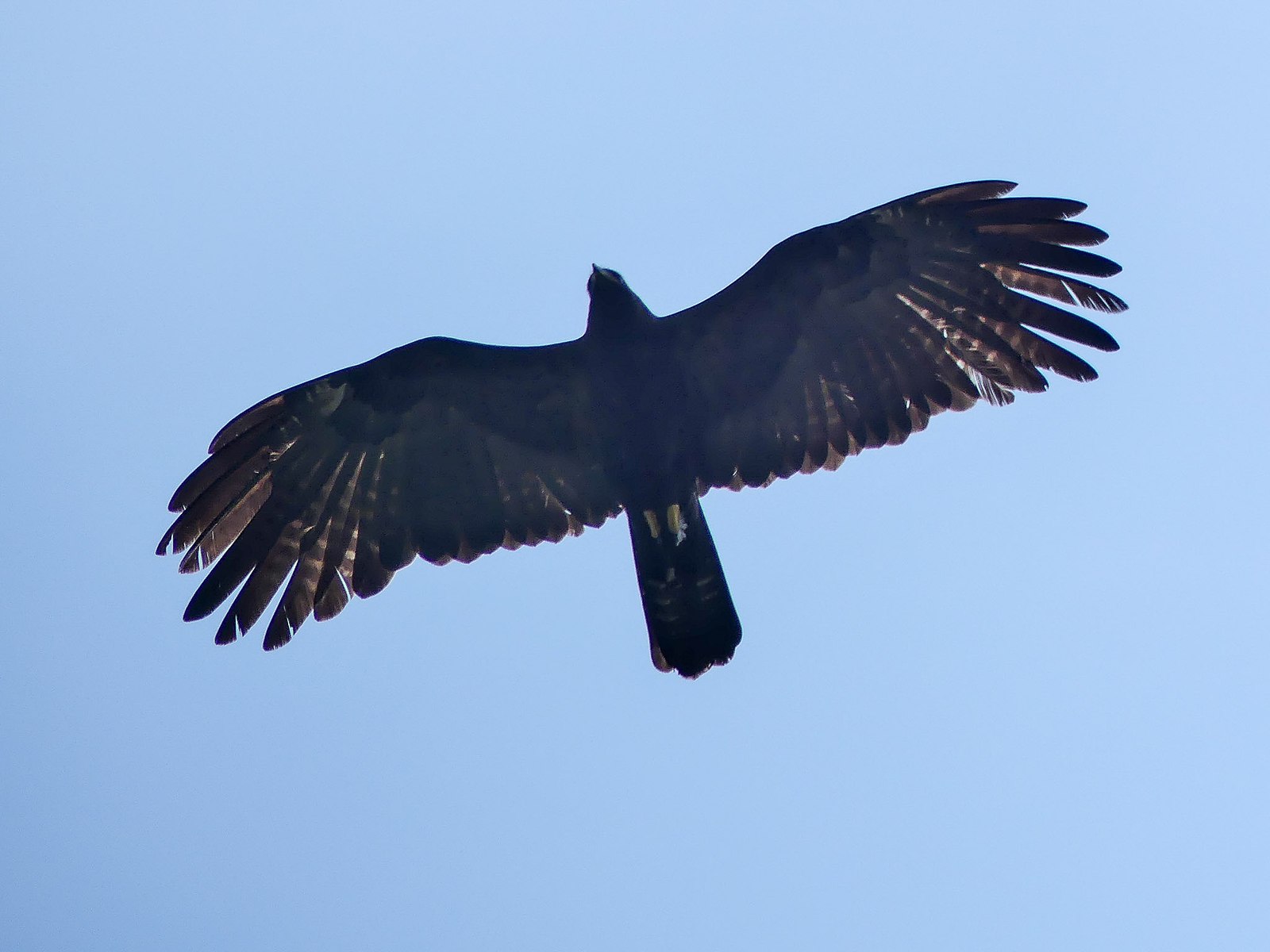The black eagle, also known as the Verreaux’s eagle, is a large bird of prey that primarily resides in Africa. Its population is estimated to be around 2,500 to 3,000 pairs, according to the International Union for Conservation of Nature (IUCN) Red List. This species is classified as Least Concern due to its large range and stable population trend.
The Exact Black Eagle Population
According to the IUCN Red List, the global population of the black eagle is estimated to be between 2,500 to 3,000 pairs. This population estimate is based on the species’ large range and stable population trend.
Habitat and Feeding Habits
 Image source: Black Eagle by Mike Prince
Image source: Black Eagle by Mike Prince
Black eagles typically inhabit mountainous areas with cliffs and rocky outcrops, where they build their nests. They primarily feed on medium-sized mammals, such as hyraxes and rock dassies, but will also take birds, reptiles, and occasionally, young antelopes.
Threats to the Black Eagle Population
The main threats to the black eagle population include:
- Habitat Loss: Mining, quarrying, and infrastructure development in their mountainous habitats can lead to nest site loss and disturbance.
- Disturbance: Human activities, such as recreational activities and development, can disturb the black eagles and their nesting sites.
- Persecution: Black eagles may be persecuted by humans, either intentionally or unintentionally, due to perceived threats to livestock or other wildlife.
- Poisoning: The use of pesticides and lead ammunition can result in secondary poisoning of black eagles.
Conservation Efforts
Conservation efforts for black eagles include:
- Habitat Protection: Protecting the mountainous areas where black eagles reside is crucial for their conservation.
- Nest Monitoring: Monitoring the nesting sites of black eagles can help identify and address any threats to their breeding success.
- Community Engagement: Engaging local communities in conservation activities can help reduce human-eagle conflicts and promote the protection of the species.
Verreaux’s Eagle Project in South Africa
One example of a conservation effort for the black eagle is the Verreaux’s Eagle Project in South Africa. This project aims to conserve the species by:
- Studying the ecology of the black eagle
- Monitoring nesting sites
- Engaging local communities in conservation activities
Black Eagle Population Trends
The black eagle population is currently considered stable, according to the IUCN Red List. However, it’s important to note that specific data on the population trends in different regions of Africa is limited.
Conclusion
While the black eagle population is currently stable, it faces various threats due to human activities. Conservation efforts are underway to protect the species and its habitat, but more research and data are needed to fully understand the population dynamics and conservation needs of the black eagle.
References:
- BirdLife International. 2021. Aquila verreauxii. The IUCN Red List of Threatened Species 2021: e.T22698485A173729558. https://dx.doi.org/10.2305/IUCN.UK.2021-3.RLTS.T22698485A173729558.en.
- Verreaux’s Eagle Project. 2021. Homepage. https://verreauxseagleproject.org/
- African Bird Club. 2021. Verreaux’s Eagle. https://africanbirdclub.org/bird-info/verreauxs-eagle.

